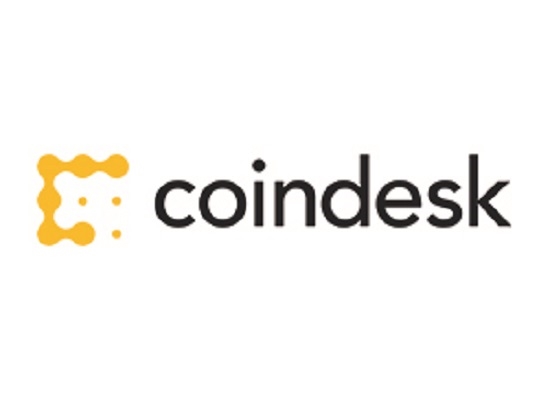Global custodians and crypto custody – why so slow?

By Noelle Acheson of CoinDesk
As with all new technologies, blockchain has been met with the predictable sequence of scepticism, interest, education and, eventually, cautious and then enthusiastic acceptance – at least on the part of the asset management sector. Cryptoassets (which comprise cryptocurrencies such as bitcoin as well as more esoteric tokens) are not only popping up in established funds with increasing frequency, but they are also forming the basis of new funds exclusively dedicated to taking advantage of the potential high returns that volatility and relatively untested waters could bring.
Yet cryptoassets are complicated to invest in.
It’s not just the relatively opaque and illiquid markets, the uncertain legality and a complex taxonomy. It’s also the sheer difficulty of solving, to the satisfaction of investors, administrators and regulators, a key element of investing: asset custody.
While the sector is evolving, the lack of “recognised names” that offer this service is often cited as one of the main barriers to institutional investment in the asset class. Several startups offer an institutional-grade service. And Goldman Sachs, State Street and Northern Trust (among others) have hinted that they are exploring how to offer crypto custody to their fund clients. Yet the going is slow. Why?
Let’s take a look at the main factors holding back development:
Legal risk
First, there is a lot of uncertainty over what current law requires.
In the US, the Custody Rule under the Investment Advisers Act of 1940 stipulates that securities and funds managed for third parties must be held with a “qualified custodian” (banks, savings associations, registered broker-dealers, registered futures platforms).
Note that the rule specifies “securities and funds”.
Bitcoin and ethereum are not securities, according to senior SEC officials. Nor are they “funds”, according to regulators everywhere. So, are they exempt from this rule?
Technically, yes, but the situation is unclear. And large funds don’t like “unclear”. The regulators are looking at this issue, and may end up amending the Act to either officially exempt or include cryptocurrencies. But for now, they have not issued a pronouncement either way.
The landscape in Europe is also confusing, with an alphabet soup of piecemeal regulation that mainly focuses on smoothing cross-border friction. AIMFD specifies that “what can be safely held by a depositary, should be held by a depositary”. This leaves a lot open to interpretation.
And when it comes to custody of bearer assets, who actually owns them? Would the custodian be legally required to compensate a client if its cryptocurrencies were somehow corrupted or stolen? Would the financial institution have to hold additional reserves to hedge this risk?
Operational risk
Obviously, the concentration of wealth on servers presents a tempting target, and companies spend billions every year in an attempt to stay one step ahead of ingenious hackers.
With cryptoassets, trust is a crucial factor (ironic for a technology that was supposed to turn trust into an algorithm). Fair or not, it is more likely that large funds will prefer to custody with a known name than with a start-up. And yet developing the required level of expertise in blockchain security is not easy. Banks and custodians have decades of experience protecting servers. No-one has decades of experience protecting crypto wallets.
Also, complementary third-party services such as crypto insurance, fund administration and audits are still in their infancy, and need to grow to provide the requisite support and depth to institutional investor services.
Reputational and systemic risk
A breach of trust on the crypto side – that is, a loss of cryptoassets due to a technical fault or a hack – could seep through to other areas of the business. In a sector where reputation is everything, this could have devastating consequences for a company.
And, given the inter-connected nature of finance, the collapse of a large financial institution could have an impact on the entire economy. For the too-big-to-fail firms, additional scrutiny could impose even further hurdles to the development of a cryptoasset custody service.
Outlook
In spite of the barriers, infrastructure development is progressing. New custody offerings are surfacing almost every week, and large incumbents are becoming ever more familiar with the new technology and its implications.
Yet the infrastructure cannot evolve in isolation – other complex factors, such as regulation and technology application, need to evolve simultaneously.
That is unlikely to happen quickly. But it is happening.
While it may seem slow to us “in the trenches”, in 10 years we will probably look back on this time as a phase of rapid deployment. And, most likely, we will be relieved that the main infrastructure players took their careful time before jumping in.
Interested in keeping up to date with cryptoasset infrastructure developments? Sign up for CoinDesk's Institutional Crypto newsletter here: https://www.coindesk.com/newsletters/institutional-crypto/
Found this useful?
Take a complimentary trial of the FOW Marketing Intelligence Platform – the comprehensive source of news and analysis across the buy- and sell- side.
Gain access to:
- A single source of in-depth news, insight and analysis across Asset Management, Securities Finance, Custody, Fund Services and Derivatives
- Our interactive database, optimized to enable you to summarise data and build graphs outlining market activity
- Exclusive whitepapers, supplements and industry analysis curated and published by Futures & Options World
- Breaking news, daily and weekly alerts on the markets most relevant to you



